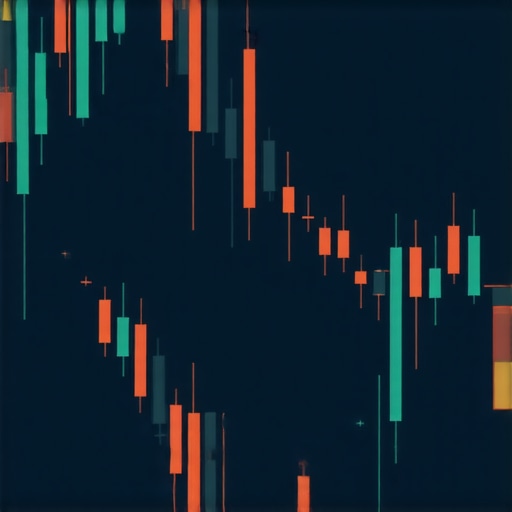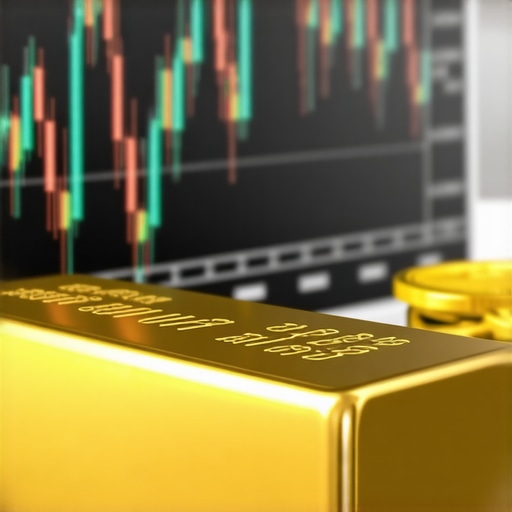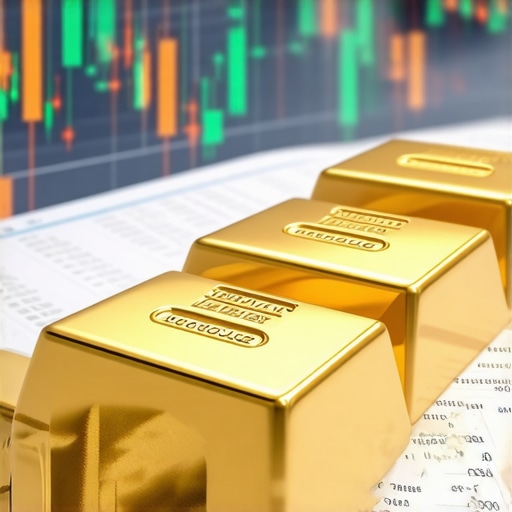Understanding Gold’s Position as a Premier Hedge in Volatile Markets
In the complex landscape of global finance, gold consistently emerges as a sophisticated instrument for wealth preservation amidst economic upheavals. Recognized for its intrinsic value and historical resilience, gold’s role as a hedge is underpinned by nuanced market dynamics and macroeconomic factors. This article explores the layered mechanisms through which gold secures investor portfolios during periods of systemic risk, examining its strategic relevance in contemporary financial planning.
Why Gold Outperforms Traditional Assets in Crisis Conditions
Unlike fiat currencies and equities, gold’s value proposition is rooted in its scarcity, liquidity, and cultural significance. During times of inflation, geopolitical tensions, or currency devaluation, gold’s price often inversely correlates with paper assets, offering a safe harbor. Studies, including those published in the Journal of Financial Economics, demonstrate that gold maintains purchasing power and acts as a portfolio diversifier, reducing overall volatility.
The Mechanics of Gold as a Diversifier and Inflation Hedge
Gold’s unique attributes allow it to serve as an effective inflation hedge, especially when monetary authorities resort to expansive policies. Its limited supply and non-correlation with traditional asset classes enable it to absorb shocks that erode fiat currencies. Moreover, strategic allocation to gold in a diversified portfolio can mitigate downside risks, as evidenced by historical performance during the 2008 financial crisis and recent macroeconomic disruptions.
What are the optimal strategies for integrating gold into a modern investment portfolio?
Expert investors leverage a combination of physical gold, ETFs, and futures contracts to balance liquidity, security, and growth potential. For instance, diversifying holdings across physical gold assets and gold mining stocks can enhance overall resilience. Additionally, implementing tactical trading strategies, such as technical analysis of gold futures, can capitalize on short-term price movements, maximizing returns during volatile periods. For comprehensive guidance, consulting resources like strategic trading frameworks is advisable.
Emerging Trends in Gold Demand and Their Impact on Future Prices
Recent shifts in global demand, driven by rising investment interest and jewelry consumption, influence gold’s market trajectory. Growing institutional participation, especially from central banks engaging in quantitative easing, further amplifies price volatility. As noted in a recent report on demand trends, these factors suggest a complex future for gold’s pricing, necessitating nuanced investment approaches.
How Gold’s Supply Chain Dynamics Influence Its Hedge Effectiveness
Understanding supply-side factors, including mining output and geopolitical stability in key producing regions, is critical for assessing gold’s hedging capacity. Disruptions in supply chains can lead to price surges, further reinforcing gold’s role as a safe asset. Expert analysis indicates that staying informed about these supply dynamics can significantly enhance strategic decision-making.
For investors seeking to deepen their understanding of gold’s market intricacies, exploring detailed analyses such as market analysis reports can be invaluable. Engaging with comprehensive, authoritative insights ensures a proactive stance in wealth preservation strategies, especially in uncertain economic climates.
Do you have insights or experiences with gold as a hedge during recent market downturns? Share your expertise and join the conversation with fellow investors and financial strategists.
Harnessing the Power of Gold in Dynamic Portfolio Management
In the rapidly evolving financial landscape, sophisticated investors recognize that static asset allocation strategies are no longer sufficient to safeguard wealth. The integration of gold into a diversified portfolio requires a nuanced understanding of macroeconomic signals, geopolitical trends, and technical analysis tools. By employing adaptive strategies, investors can optimize gold’s role as a hedge and growth asset, ensuring resilience in turbulent times.
Can Advanced Quantitative Models Enhance Gold Investment Decisions?
Indeed, leveraging quantitative models—such as machine learning algorithms and sentiment analysis—can significantly improve timing and allocation decisions in gold investments. These models synthesize vast datasets, including macroeconomic indicators, central bank policies, and market sentiment, to generate predictive signals. For instance, neural networks trained on historical price movements and demand metrics can identify subtle patterns that precede price shifts, enabling proactive adjustments to holdings.
Research from institutions like the World Gold Council highlights the importance of integrating forward-looking data into investment frameworks. By doing so, investors can mitigate risks associated with unforeseen macroeconomic shocks or geopolitical disruptions, thereby enhancing portfolio robustness.
How can investors develop a multi-layered strategy that balances physical gold, derivatives, and mining stocks?
Constructing a multi-layered gold strategy involves balancing immediate liquidity needs with long-term wealth preservation goals. Physical gold assets—such as bars and coins—provide security and liquidity, while gold ETFs and futures contracts offer flexibility for tactical trading. Meanwhile, exposure to gold mining stocks can generate leverage and growth potential, especially during periods of rising gold prices.
Experts recommend segmenting holdings into core and tactical components: a core position in physical gold or ETFs for stability, complemented by tactical positions in futures or mining stocks for opportunistic gains. This approach allows investors to adapt to changing market conditions while maintaining a resilient foundation. For more advanced insights, exploring emerging demand trends and market analysis reports can refine strategic decisions.
How do macroeconomic factors and geopolitical risks shape the future trajectory of gold prices?
Global economic indicators—such as inflation rates, currency stability, and monetary policy shifts—directly influence gold’s attractiveness as a safe haven. Geopolitical tensions, conflicts, and trade disputes often trigger surges in demand for gold, as investors seek refuge from market uncertainty. The interplay between these factors creates complex price dynamics, underscoring the need for continuous market monitoring and flexible investment strategies.
Recent studies, including insights from market analysis experts, emphasize the importance of understanding the evolving macroeconomic environment to anticipate gold’s future movements. By integrating macroeconomic forecasting with technical analysis, investors can craft proactive strategies to capitalize on emerging trends or hedge against downturns.
Are you interested in developing a comprehensive gold investment plan tailored to your risk appetite and financial goals? Sharing your experiences and questions can foster a more informed community of wealth builders and strategic investors.
Leveraging Macro-Financial Models to Predict Future Gold Price Trends
In the realm of sophisticated gold investment, macro-financial models serve as vital tools for forecasting price movements with higher precision. By integrating variables such as inflation expectations, currency fluctuations, and central bank policies, these models help investors anticipate shifts that traditional technical analysis might overlook. For example, the use of Bayesian econometric models, as detailed in the Journal of Economic Dynamics & Control (2022), allows for updating probabilities dynamically as new economic data becomes available, thus refining predictive accuracy.
How Geopolitical Instability Influences Gold’s Diversification Role
Geopolitical tensions, whether trade disputes, regional conflicts, or political upheavals, often lead to increased demand for gold as a safe haven. However, the nuanced impact depends on the nature and scope of the instability. For instance, localized conflicts may cause regional price spikes, while global crises can trigger sustained rallies. Analyzing geopolitical risk indices—such as the Global Peace Index or the EIU Geopolitical Risk Index—can provide a quantitative foundation for timing and sizing gold allocations within a diversified portfolio.
What advanced techniques can be employed to quantify geopolitical risk impacts on gold?
Quantitative methods such as sentiment analysis of news feeds combined with machine learning classifiers, like Random Forests or Neural Networks, enable real-time assessment of geopolitical risk levels. These insights can then be integrated into dynamic asset allocation models, optimizing the balance between gold and other safe assets in response to evolving geopolitical landscapes, as explored in recent research by the Harvard Business Review.

The Role of Derivatives in Enhancing Gold Investment Flexibility and Risk Management
Futures contracts, options, and swaps are integral to sophisticated gold strategies, providing avenues for hedging, speculation, and leverage. For example, options on gold futures can facilitate asymmetric risk-reward profiles, allowing investors to hedge downside exposure while maintaining upside potential. According to the Goldman Sachs Commodity Outlook (2023), active derivatives trading can also mitigate timing risks, enabling tactical entries and exits aligned with macroeconomic signals and technical indicators.
Integrating Quantitative and Fundamental Data for a Holistic Gold Strategy
The future of gold investment lies in combining quantitative models with fundamental analysis—monitoring macroeconomic indicators, supply-demand fundamentals, and sentiment trends simultaneously. Multi-factor models that incorporate variables such as real interest rates, inflation forecasts, and central bank reserve changes can generate composite signals for optimal entry and exit points. As noted by the World Gold Council, such integrated approaches are particularly effective during periods of economic uncertainty, providing a comprehensive risk management framework.
If you are committed to refining your gold investment approach, consider leveraging these advanced analytical tools and frameworks. Engaging with specialized financial advisors or data scientists can further elevate your strategic execution, ensuring resilience and growth in your wealth preservation journey.
Harnessing Quantitative Analytics for Precision Gold Investment
In the realm of sophisticated asset management, integrating quantitative models such as machine learning algorithms and sentiment analysis offers investors a refined toolkit for optimizing gold allocations. These models process vast datasets—macroeconomic indicators, geopolitical news, and market sentiment—to generate predictive signals that inform tactical decisions. Neural networks, for instance, can identify subtle price patterns, enabling proactive portfolio adjustments and enhancing risk-adjusted returns.
Deciphering Supply Chain Complexities and Their Strategic Implications
Supply-side factors—including geopolitical stability in key mining regions and technological advancements in extraction—substantially influence gold’s hedging capacity. Disruptions, whether due to political unrest or environmental regulations, can trigger price volatility. A nuanced understanding of these dynamics, complemented by real-time supply chain monitoring, empowers investors to anticipate market shifts and adjust holdings accordingly.
How Can Geopolitical Risk Indices Enhance Investment Timing?
Employing quantitative measures like the Global Peace Index or the EIU Geopolitical Risk Index enables investors to quantify geopolitical tensions. Coupled with machine learning classifiers, these indices facilitate real-time risk assessments, allowing for dynamic rebalancing of gold positions. This proactive approach mitigates exposure during periods of escalating instability and capitalizes on safe-haven demand during crises.
What Role Do Derivatives Play in Advanced Gold Portfolio Management?
Derivatives such as options, futures, and swaps serve as vital instruments for hedging and leveraging gold investments. Options, in particular, allow for asymmetric risk management—capping downside while maintaining upside potential. According to the Goldman Sachs Commodity Outlook 2023, active derivatives strategies can fine-tune exposure, enabling investors to respond swiftly to macroeconomic signals and technical trends, thus optimizing overall portfolio resilience.
Integrating Macro-Financial Models for Predictive Precision
Macro-financial models synthesizing variables like inflation expectations, currency fluctuations, and central bank policies offer a comprehensive framework for anticipating gold price movements. Bayesian econometric techniques, as detailed in the Journal of Economic Dynamics & Control, dynamically update probabilities with new data, sharpening predictive accuracy and guiding strategic entry and exit points in volatile environments.
Why Combining Fundamental and Quantitative Data Elevates Gold Strategies
Multi-factor models that incorporate macroeconomic indicators, supply-demand fundamentals, and sentiment metrics create a holistic view, enabling more informed decision-making. The World Gold Council emphasizes that this integrated approach is especially effective amid economic uncertainty, providing a robust risk management foundation for long-term wealth preservation.
What Are the Future Trends in Gold Demand and Price Dynamics?
Emerging trends, including institutional investments, jewelry consumption, and central bank reserve shifts, shape future market trajectories. Quantitative analysis of demand indices, coupled with geopolitical risk assessments, allows investors to position proactively. Staying ahead of these trends requires continuous market intelligence and adaptive strategies.
How Can Investors Develop a Multi-Layered Gold Strategy?
A sophisticated gold investment approach balances physical assets, derivatives, and equity exposure. Core holdings in physical gold or ETFs provide stability, while tactical positions in futures or mining stocks capitalize on market movements. Segregating holdings into strategic and opportunistic components ensures resilience and growth potential, especially during macroeconomic shifts.
Engage with Advanced Gold Investment Frameworks Today
To elevate your wealth preservation strategies, explore integrating these expert insights, advanced analytical tools, and dynamic risk management techniques. Collaborate with financial advisors and data scientists to tailor multi-layered, adaptive portfolios that withstand economic turbulence and capitalize on emerging opportunities. Begin your journey toward resilient wealth today.
Expert Insights & Advanced Considerations
1. Macroeconomic Variables Will Continue to Drive Gold’s Safe-Haven Appeal
Understanding the interplay of inflation expectations, currency stability, and central bank policies remains crucial for predicting gold’s resilience during economic turbulence, especially as these macro factors evolve unpredictably in 2025.
2. Geopolitical Risk Quantification Enhances Portfolio Resilience
Advanced quantification of geopolitical risks, utilizing sentiment analysis and indices like the Global Peace Index, enables proactive rebalancing of gold exposure, safeguarding assets during crises.
3. Integration of Quantitative Models and Fundamental Data Is the Future
Combining machine learning-based predictive analytics with macroeconomic fundamentals allows investors to craft nuanced, adaptive strategies that optimize gold’s diversification benefits.
4. Derivatives Offer Tactical Flexibility for Experienced Investors
Options and futures provide asymmetric risk management and leverage, enabling sophisticated portfolio adjustments aligned with macro trends and technical signals.
5. Supply Chain Dynamics and Geopolitical Stability Are Critical for Price Forecasts
Monitoring geopolitical stability in mining regions and technological advancements in extraction informs supply-side expectations, directly impacting gold’s hedging capacity and investment returns.
Curated Expert Resources
- World Gold Council: Offers comprehensive market analysis, demand trends, and strategic insights tailored for professional investors seeking deep expertise.
- Harvard Business Review — Geopolitical Risk Analysis: Provides sophisticated methodologies for quantifying geopolitical risks and their impacts on asset classes like gold.
- Journal of Economic Dynamics & Control: Features advanced econometric models, including Bayesian techniques, useful for predicting macro-driven gold price movements.
- Goldman Sachs Commodity Outlook: Delivers authoritative market forecasts and derivatives strategies from leading financial institutions.
- BuyGoldNow.com: Curates practical trading frameworks and supply chain insights tailored for strategic investors aiming for resilience and growth.
Final Expert Perspective
The strategic importance of gold as a hedge in 2025 hinges on mastering macroeconomic forecasting, geopolitical risk quantification, and leveraging sophisticated analytical tools. Integrating these high-level insights with practical trading strategies ensures investors can navigate volatility while preserving and growing wealth. To deepen your expertise, engage with authoritative resources and collaborate with seasoned financial professionals—your informed approach today will define your resilience tomorrow. Share your insights or explore tailored strategies by connecting with industry experts and advanced analytical frameworks.










